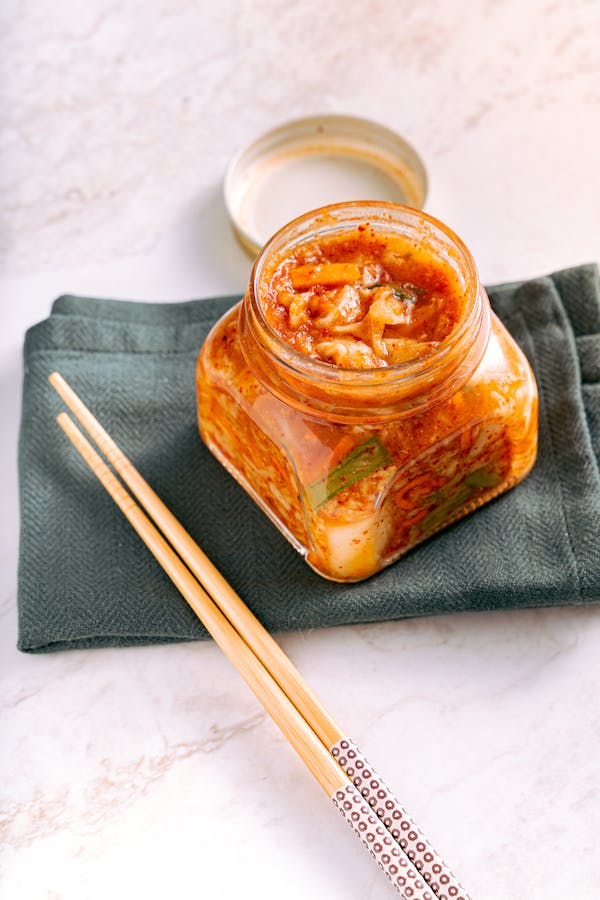When it comes to popular pickled foods, Indians have achaar, Germans have sauerkraut, and Koreans have kimchi. The fiery fermented Kimchi from Korea is a living history in essence. It is the national dish of South Korea and dates back as far as two to three thousand years.
A harmonious combination of flavors and spices with healthy ingredients, kimchi is a lot more just a palatable dish. The traditions of making and sharing this cuisine are in the Intangible Cultural Heritage list of UNESCO. It is an integral part of every meal, and it reaffirms the Korean identity and its food culture. Kimchi is so significant to the Koreans that they sent kimchi to space with their first astronaut to outer-space in 2008.
Today, kimchi is a product of several attempts, developing with time from individual and regional influence. It is one delicious Korean delight with a taste and nutrition that embodies the Korean culture. The roots of its origins sprout from the wisdom of ancient Koreans. They, in years, mastered the arts of food preservation for need in cold winters. So how did we get here? Let’s peek into the history to unravel the journey of it to our times for tribute and knowledge!
Origins For Survival
The existence of kimchi traces back to ancient times when Koreans first started agriculture.
Ever since the beginning, Korea has experienced extreme winters because of its geographical position. It is in northeast Asia and can have some of the coldest weather in its latitude. It is also a mountainous country with very few fertile plains. These things make food preservation a top priority during winters. Koreans looked for vegetable preservation as growing them all year round was impossible when early Koreans stepped into agriculture for life sustenance. They started salting their vegetables to preserve them and ate them with grains for ease of digestion. These grains back then were barley and millet: the rice was not yet a part of their meals.
This salting of vegetables turned into a preservation art soon. Koreans were making pickles and soybeans as a paste (doenjang) and sauce(ganjang).
Over the centuries, Koreans mastered this art, and the fruit of this culinary wonder took multiple facets — kimchi being one of them.
The Period of Three Kingdoms (57 B.C.E. – 668 C.E.)
During this period, the nearby kingdoms applauded the preservation methods of Koreans. Kimchi during these times had radishes salted in brine or dipped in paste, unlike today. It also lacked many spices. It was because trading wasn’t prevalent because of little development and globalization. The Chinese history book Sanguozhi (Records of the Three Kingdoms), written in the 3rd century C.E., acknowledged how the people of Goguryeo excelled at fermented foods ranging from wine to soybean paste and fish.
Goryeo Period (918-1392)
During the Goryeo Period, multiple countries had started trading their products to neighbors. New vegetables made their way to Korea as time passed and the trade bloomed. Koreans became more creative with their ideas for making kimchi with more healthy ingredients at hand and the culinary skill of food preservation.
Kimchi now had several additions for a palatable flavor and nutrition. From the ingredients to ways of its preparation, several things about kimchi changed as it developed. Vegetables like large radishes, pine mushrooms, and Chinese cabbage had found their ways to this Korean delight.
The ingredients further diversified as people were now experimenting with flavors for a delicious delicacy. Many households had kimchi with wild leeks, Indian mustard leaves, cucumbers, and bamboo shoots. It was also when juicy and gravy kimchi came into being with garlic and spices for seasoning.
The first known written record about kimchi itself belongs to the middle of the Goryeo Dynasty. It was from Poet Lee Kyu-bo.
The Joseon Dynasty (1392–1910)
The Joseon Dynasty remains the most stable and longest dynasty of Korea’s history. The average king’s table featured several kimchi types: from water kimchi to baechu kimchi (white cabbage) and Kkakdugi (tiny-cubed radish kimchi).
The invasions and blooming trade of this period enriched the kitchens of Korea with new ingredients. In fact, during 1592-1598, both Japan and Korea experienced several culinary changes. Many owe it to the failed attempts for invasion by Japan’s Toyoromi Hideyoshi. The Japanese took ways of making Caledon pottery, art, and Buddhism ideologies with them, while Korea learned of sweet potatoes and chile peppers. However, not all agree with this. They think it was because Korea traded with China. Regardless of the debate, it was within a hundred years during this dynasty when kimchi changed. Newer fermentation methods and recipes with types surfaced.
Clever kimchi makers added animal proteins as well. Pheasant got mentioned in a book in 1670 for the first time. In 1803, the Gyuhab Cheongseo, an encyclopedia for women, had fermented fish in kimchi’s recipe.After 1800 C.E, Tongbaechu Kimchi, the whole cabbage kimchi everyone is familiar with, was first invented. It became the most popular style of kimchi, replacing radish, cucumber, and eggplant.
By 1827, there were 92 different types of kimchi. Today there are over 200.
In all of these times, there was a direct link between trade and kimchi’s development. The more ingredients, the more types surfaced.
The Takeaway
The history of the delicious side dish Kimchi shows us that Korean foods originate from a time wherein survival was the priority. The basic need for food in winters was the reason behind its invention. Over the centuries, it adapted due to creativity, mastering of skills, and outer-world influence. The art of fermenting food remains a popular tradition of Korea. Today, kimchi has more than 200 types. It comes with a myriad of flavors and ingredients. People enjoy this Korean delight worldwide. The most common one today uses chili peppers and Chinese cabbage as the main ingredients.
Make sure to check out the types of kimchi.
